18737 books for « m a christian »Edit
-
Type
Artists book (3)
Book (18473)
Drawings (1)
Engraving (2)
Magazine (14)
Maps (2)
Music sheets (227)
New book (4)
Object book (1)
Photographs (7)
Posters (3)
-
Latest
Last 24h (33)
Last 3 days (17)
Last month (184)
Last week (64)
-
Language
Albanian (1)
Czech (1)
Dutch (1)
English (2)
French (18571)
German (42)
Greek (1)
Latin (5)
Romanian (1)
Russian (111)
Spanish (1)
-
Century
16th (8)
17th (50)
18th (278)
19th (362)
20th (8625)
21st (3456)
-
Countries
Belgium (663)
Brazil (1)
Canada (62)
China (4)
Côte d'Ivoire (25)
Denmark (404)
France (16083)
Germany (12)
Greece (10)
Italy (3)
Switzerland (1347)
United Kingdom (10)
United States of America (113)
-
Syndicate
ALAC (55)
CLAM (15)
CLAQ (3)
CNE (4)
ILAB (8203)
NVVA (163)
SLACES (163)
SLAM (7354)
SNCAO (16)
Topics
- Africa (49)
- Alsace (159)
- Ampelography - wines (45)
- Andersen hans christian (437)
- Aquitaine (87)
- Archaeology (146)
- Architecture (177)
- Autographs (62)
- Belgium (71)
- Bernadac christian (220)
- Biography (174)
- Brittany (77)
- Children’s books (315)
- Cinema (89)
- Civilisation (58)
- Collections (55)
- Comic strip (234)
- Concentration camp (54)
- Cooking (210)
- Culinary art (53)
- Dedication (154)
- Detective novels (79)
- Drawings (55)
- Economics (124)
- Education (136)
- Education - morals (67)
- Egypt (236)
- Esotericism (63)
- Ethnology (44)
- Fine arts (180)
- First edition (121)
- Football (51)
- Football (49)
- Freemasonry (57)
- Genealogy (57)
- Genet jean (51)
- Geography (128)
- Germanic languages (94)
- Germany (78)
- Guide books (89)
- Helvética (138)
- History (745)
- Hitler (57)
- Humour anecdotes (50)
- Industrial arts & crafts - fine arts (86)
- Jacq christian (522)
- Journalism (49)
- Laborde christian (65)
- Law (165)
- Literature (1304)
- Magazine (139)
- Mathematics (66)
- Medicine (170)
- Megret christian (50)
- Military arts (53)
- Millau christian (60)
- Montaignac christian (96)
- Motor vehicle (52)
- Music (52)
- Navy (62)
- Newspapers press (213)
- Painting (67)
- Paris (101)
- Petitfils jean-christian (67)
- Philosophy (221)
- Photography (210)
- Plume christian (50)
- Poetry (273)
- Policy (162)
- Provence (55)
- Psychology (99)
- Regionalism (199)
- Religions (175)
- Review (177)
- Reviews (172)
- Rock (122)
- Rugby (45)
- Scandinavian literature (60)
- Science fiction (44)
- Sciences (104)
- Scores (235)
- Social sciences (48)
- Sociology (65)
- Songs (210)
- Sports (65)
- Sudan (80)
- Switzerland (148)
- Tales (106)
- Tea (56)
- Teaching (48)
- Terrain (52)
- Theatre (77)
- Theology (62)
- Travel (106)
- Various (159)
- War (315)
- Wine (58)
- Youth (85)
- Zoology (45)
- Zuber christian (137)
A truly splendid and unique collection of 23 Hans Christian Andersen-items that together tell the true story of Andersen's life and sheds light on all aspects of his life and work. The collection is divided into the following (full descriptions belo... - [MAGNIFICENT HANS CHRISTIAN ANDERSEN-COLLECTION]
(1822) - 1872.
With the present Hans Christian Andersen-collection, we have aimed not at an exhaustive collection of ALL of his many writings nor at a LARGE collection, but at an exquisite, chosen collection that tells us the true story of Andersen's life. A collection that enlightens us about both the author and the man Hans Christian Andersen and that sheds light on all aspects of his life and work. A collection that epitomizes quality, scope, and importance, not merely numbers of items nor works that are not particularly important in his life's work. Every one of the 23 items in the present collection has been carefully chosen to represent a certain Aspect of Hans Christian Andersen at a certain time of his life, in an attempt to get as close to the great fairy tale author as possible. The items basically span his entire career - from his first book, published at the age of 17 (and only known in about 10 copies) to an original manuscript poem by the ageing author at the age of 67. The 23 carefully chosen and unique items cover his earliest publications that are of extreme scarcity, his three seminal fairy tale cycles that catapulted him into fame and created the genre of the fairy tale, for which he is now famous world-wide, five magnificent presentation-copies (among them an absolutely magnificent copy of his very first fairy tale, one of the best presentation-copies known) that each give us an insight into the poet Andersen and into his circle of friends, six splendid original letters that are all different in style and content and written from all over the world (among them one of the extremely rare letters known by him written in English, in Latin hand), an original manuscript, which is an extreme scarcity on private hands and something one may never come by again, two books from Andersen's own library, which is extremely rare to find, as only 75 such books are known and almost all of them are in institutional holdings, and finally the three main translations that ensured his fame in the rest of the world: the most important translations into German, English, and French respectively. The collection is divided into the following seven categories, and below follows a short preview and introduction to each. Upon request, a document with full, elaborate descriptions of each item will be provided. 1. Debuts/earliest publications (see also 3.1.)2. The three fairy tale collections/cycles3. Presentation-copies (see also: 2.3.)4. Letters5. Manuscript6. Books from Andersen's library7. The three main translations1. Debuts/earliest publications1.1. Ungdoms-Forsøg / Gjenfærdet ved Palnatokes Grav, en Original Fortælling" og Alfsol, en original Tragoedie. Ungdoms=Forsøg. Kjöbenhavn, [1822]. The extremely rare first printing of Hans Christian Andersen's first book - with facsimiles of the title-page, the contents-leaf and a further four leaves. The book is exceedingly rare. A title-issue appeared in 1827. No more than about ten copies in all of both the first issue and the title-issue are known to exist - only a couple of them are known in private collections, and less than a handful of copies are known outside of Denmark. The present publication, his first book, is of immense importance to Andersen's life and work and is arguably THE most important piece of Anderseniana. 1.2. Ved min Velgører Provst Gutfelds Død. Slagelse, 1823.The extremely rare first printing of the 1823-issues of this slightly obscure newspaper, which contains Hans Christian Andersen's third publication. This exceedingly rare piece of Anderseniana was published when the master of the fairy tale genre was merely 17 years old, namely in February 1823. The present publication constitutes one of the two pieces of publication that are at the epicentre of the coming-to-be of the greatest poet and author to emerge from Danish soil. This little piece is a heartfelt, almost perfectly stylized poem that constitutes an obituary of Hans Christian Andersen's early benefactor, Gutfeld, who was responsible for Collin accepting to be Andersen's benefactor. It was due to Gutfeld and his belief in Andersen that he made it on into the world and was taken seriously enough - at the mere age of 17 - to later be allowed to follow his heart and his life dream - that of writing.1.3. Fodreise fra Holmens Canal til Østpynten af Amager i Aarene 1828 og 1829. Kjöbenhavn, 1829. The rare first edition of Hans Christian Andersen's debut novel, ""Journey on Foot"", here in the extremely scarce original printed wrappers. Andersen himself considered this book his debut and refers to it as ""my first publication"". It came to play a tremendous role in the development of his writing and constitutes one of his most important works. It is the first piece of Andersen that yields any success and the first work for which he gained any recognition. ""It is a well-known fact that Hans Christian Andersen made his début as a writer three times during his youth. The first time he published a book was in 1822, when ""Youthful Attempts"" came out... He was 17 years old, penniless and in need for help, but the main part of the circulation ended up in the paper mill... The second time he made his début was in 1829, when he published ""Journey on Foot from Holmen's Canal to the Eastern Point of Amager"", a book which can hardly be classified as a travel book.. it seems a subtle and humorous arabesque and a literary satire. This book was published in the year after he had left grammar-school and was qualifying for the entrance examination to academic studies at the university. It can rightly be regarded as a key, which enables us to understand the entire development of his later production...2. The three fairy tale-collections2.1. Eventyr fortalte for Børn. (1.-3. Hefte) + Eventyr fortalte for Børn. Ny Samling (1.-3. Hefte). 2 Bind. Kjöbenhavn, 1835-1847. A lovely set of this exceedingly rare collection of Andersen's earliest fairy tales. This legendary fairy tale-collection that created the fairy tale-genre and brought Andersen international fame, consists in six parts that together make up two volumes. As with most of the other few existing copies, the present set is a mixture of issues and likewise has certain wants concerning title-pages, half-titles and tables of contents. ""During Andersen's lifetime 162 of his Fairy Tales were published, but the scarcest and most difficult to obtain are these six little pamphlets. We do not know exactly how many, or how few, copies were printed, but we do know that no copy with all the title pages and tables of contents has ever been offered for sale.""2.2. Nye Eventyr. 2 Bind (5 samlinger). Kjøbenhavn, 1844 - 48.First edition of Hans Christian Andersen's seminal second collection of fairy tales - the publication that made him internationally famous - with all five collections in first issue, also the first, which is of the utmost rarity. It is in this legendary first collection that we find the first printing of ""The Ugly Duckling""(not as is indicated in PMM in his first). The rarity of the first issue of volume 1, collection 1 is legendary. It was published on November 11th 1843 (dated 1844 on the title-page) in a very small number, probably due to the poor sales of Andersen's first fairy tale collection. Against all belief, this first collection sold out within a few days, catapulting Andersen into worldwide fame, and a second issue was published already on December 21st 1843. Thus, only very few copies of the first issue exist, and almost all collections of the ""New fairy Tales"" are bound with the second issue or the third of 1847, meaning that they do not contain the actual first printing of ""The Ugly Duckling"", ""The Nightingale"", ""The Angel"", and ""The Sweethearts"". 2.3. Nye Eventyr og Historier. 3 Series, 10 collections. Kjøbenhavn, 1858-1872.A splendid fully complete copy of Andersen's third fairy tale collection, WITH ALL 10 ISSUES IN FIRST EDITIONS, FIRST ISSUES, ALL IN THE ORIGINAL PRINTED WRAPPERS, AND ONE OF THEM WITH A SIGNED PRESENTATION-INSCRIPTION BY ANDERSEN - WITH 39 FAIRY TALES IN THEIR FIRST PRINTINGS. It is highly uncommon to find all ten issues of the series together, let alone in the original printed wrappers, each of which is a scarcity on their own. To our knowledge, only one other such set exists in a private collection, and that is in far from as fine condition as the present, where all but one of the issues (which does not have the back wrapper) are fully complete with the spines, exactly as issued. 3. Presentation-copies3.1. Digte. Kjöbenhavn, 1830.THE RARE FIRST EDITION - PRESENTATION-COPY, IN THE EXCEEDINGLY SCARCE ORIGINAL PRINTED WRAPPERS - OF ANDERSEN'S THIRD BOOK, CONTAINING HIS FIRST FAIRY TALE. The magnificent presentation-inscription - hitherto unknown and unregistered - is arguably one of the most important Andersen-presentations known to exist. It is inscribed to Henriette Collin, the then fiancée, later wife, of his closest and most important friend, who was more like a brother to him, Edvard Collin. It is one of the very early Andersen-presentations known. This first published collection of Andersen's poetry constitutes Andersen's third published book (at the age of 24) and contains, at the end, the first printing of any of his fairy tales, being also his very first fairy tale ""The Ghost"" (or ""The Spectre""). This is the first time that Andersen uses the term ""Eventyr"" (fairy tale), the term which came to denote the genre for which he received world-wide fame as one of the most important writers of all time. 3.2. Nye Eventyr. Tredie Samling. Kjøbenhavn, 1845.An excellent presentation-copy of the first edition of the third ""collection"" of Andersen's second fairy tale-collection, containing five of his best fairy tales in the first printing - among them the cherished tales ""The Red Shoes"" and ""The Shepherdess and the Chimney-Sweep "". Inscribed copies of Andersen's fairy tales are very rare and extremely sought-after. But the present presentation-copy is even more interesting, as it is inscribed to a fellow author of tales for children - ""The poet Kaalund/ in kind remembrance/ of our first meeting/ the 29th of April 1845/ from the [NEW FAIRY TALES] (the printed half title) 's author."" -in the collection of Andersen's fairy tales that appeared almost simultaneously with Kaalund's renowned ""Tales for Children"" (""Fabler for Børn""). 3.3. Historier. Anden Samling. Kjøbenhavn, 1853.First edition, in splendid condition, with the original printed wrappers, of the second part of Andersen's ""Story""-collection, containing first printings of four of his famous fairy-tales. With a lovely, poetical presentation-inscription to Frederikke Larcher, signed ""H.C. Andersen"", translated as thus: ""I put my bouquet on the board of the stage/ you yourself make the impression of a fresh bouquet"". Frederikke Larcher was a stage actress, and Andersen might have given the little book as a gift upon her last performance.3.4. Nye Eventyr og Historier. Anden Række (første samling). Kjøbenhavn, 1861.An excellent copy, in the original printed, illustrated wrappers, of the separately published first part of the second series of ""Nye Eventyr og Historier"", with a lovely presentation-inscription to the title-page, translating thus ""The splendid, the spirited,/ Mrs. Agentinde Renck/ send this bouquet of stories/ from my garden of poetry this spring/ Most heartfelt and respectfully/ H.C. Andersen."" This splendid volume contains first printings of one of Andersen's most famous, most beloved and most frequently recounted fairy-tales/stories: ""What the Old Man does is Always Right"". Apart from that masterpiece of moral story-telling, the present publication contains five other of Andersen's great stories in first printings.3.5. Da Spanierne var her. Originalt romantisk Lystspil i tre Acter. Kjøbenhavn (Copenhagen), 1865. An excellent copy of the first edition of Andersen's famed play, in the scarce original binding and with a magnificent presentation-inscription to Rudolph Kranold, who at the time was director of the Royal Theatre in Copenhagen. His short reign here (until 1866) coincides exactly with the work on and premiere of one of the plays that was very closest to Andersen's heart, namely ""When the Spanish were Here"", which premiered at the Royal Theatre on April 6, 1865. Reading Andersen's diaries allows us to actually follow the play the entire way through to the stage. It is evident, both from his diaries and from the present presentation-inscription, that the play meant a lot to Andersen. As the inscription indicates, he's anxious that the play not be taken down again and he clearly asks Kranold to take good care of this play that is close to his heart. 4. Letters4.1. Autographed letter, signed in full (""Hans Christian Andersen""), in English, for the Scottish author William Hurton. Dated ""Copenhagen 2 October 1851"".The present letter is of the utmost interest, as it is written in English (in Andersen's own hand!) and also in Latin letters, as opposed the gothic handwriting that Andersen usually uses. Letters and inscriptions in Andersen's Latin hand are of the utmost scarcity. Out of the few known letters in Andersen's hand, we have even fewer letters by him written in English. He made an exception for William Hurton, to whom a few letters have been preserved, demonstrating his reverence for this Scottishman so fascinated by Andersen himself. Almost all of these letters are in institutional holdings, and the present one on private hands is a true scarcity. 4.2. Autographed letter, signed ""H. C. Andersen"", for Frederik Bøgh. Dated ""Basnæs ved Skjelskjør/ den 3 Juli 1862"". 4 pages.This very lengthy letter from Andersen to Frederik Bøgh is interesting in several respects. First of all, Andersen here mentions several of his works: new songs for the revised version of his opera ""The Raven"", proofreading and numerous comments for the ""new edition of Fairy Tales and Stories"", and a brand new fairy tale: ""Finally, I have written a new fairy tale: ""Snowdrop""."" Furthermore, Andersen talks about his health and problems he has with his eye as well as the weather and his impending travel plans. It is clear from the letter that he is very close to his young student friend Bøgh. 4.3. Autographed letter, signed ""H. C. Andersen"", for Frederik Bøgh. Dated ""Tanger I Marokko/ den 8 Nov: 1862."".An absolutely splendid letter with rare observations about Moroccan culture, the people, how they dress and behave, the food, the landscape, etc. It is clear that Tanger, with its ""wild, romantic nature"", its palm trees, its wilderness, the wild boars and hyenas, is very far from the coldness of the North. Andersen's fascination with the ""half naked men"" and women in horrible dress, with the bare headed Moorish Jews in kaftans, ""the naked brown kids that screamed and roared"", and the slaves that carry goods, leaps from the pages of the letter and paint a picture of a place that to a Dane in 1862 must seem oddly fascinating and so different. There is no doubt that this rich culture served as direct inspiration for Andersen's story-writing. 4.4. Autographed letter, signed ""H. C. Andersen"", for Frederik Bøgh. Dated ""Toledo den 6 December 1862"".A splendid letter from Toledo, which Andersen paints so clearly as only he can. ""Toledo is a dead city, but with the life of poetry"", he writes, after having described in detail, to his dear friend back home, the ruins and the melancholy that is Toledo. 4.5. Autographed letter, signed ""H. C. Andersen"", for ""Kjære William"" (i.e. William Melchior). Dated "" Frijsenborg den 27 August/ 1868. "". A lovely, cheerful birthday letter for the young birthday boy William Melchior, who was turning 7 years old. The letter is utterly charming and describes the journey of the birthday letter itself, flying over land and sea, from Jutland to Copenhagen. The letter not only portrays the ease with which Andersen communicates with children, it also constitutes a miniature version of beloved Andersen-stories such as ""Little Tuk"" and ""A Piece of Pearl String"". 4.6. Autographed letter, signed ""H. C. Andersen"", for Frederik Bøgh. Dated "" den 9 Maj 1873"".This Beautiful little letter for Nicolai Bøgh bears witness to the heartfelt bond that Andersen felt towards his young friend. This little gem of a letter is very poetical - most of it is almost like a poem, describing the sun coming through the clouds and liking the clouds to snow and the heaven to Paradise. Furthermore, Andersen mentions his friends' illness, liking him to a bird that needs to be free. Bøgh had fallen ill the previous year, from an illness that would eventually kill him 9 years later, at the mere age of 45. 5. Manuscript5.1. Original handwritten and signed manuscript for a poem entitled ""Stormfloden"" (i.e. The Storm or The Storm Surge). November (22nd), 1872. 1 1/2 handwritten pp.Original manuscripts by Andersen are of the utmost scarcity, and only very few are known on private hands. The present is the manuscript for a poem that Andersen wrote just a couple of years before he died and which was published as the preface to a ""Christmas Present"" by Vilhelm Gregersen in December 1872, just a few weeks after Andersen wrote it. The poem is very dramatic and doomsday-like, but has an uplifting an upbuilding ending. It is inspired by the dramatic storm or storm surge that hit Copenhagen on November 13th, 1872.6. Books from Andersen's Library6.1. F. ANDERSEN, C.J. HANSEN, J.P.E. HARTMANN, P. HEISE and A. WINDING. Ni Fleerstemmige Mandssange. Udgivne af Foreningen ""Fremtiden"". Kjöbenhavn, 1866.Hans Christian Andersen's own copy, with his ownership signature to the bottom of the front wrapper, of this pamphlet of ""Nine Polyphonic Male Songs"". The pamphlet contains nine lovely songs written by the greatest Danish authors of the period, set to music by the most famous Danish musicians of the period. Andersen's contribution is the song ""Hun har mig glemt"" (She Has me Forgotten), which he had printed for the first time in 1854, but in a different version, with different wording. Here, it is set to music by F. Andersen. 6.2. G.h. [GEORG EMIL BETZONICH]. En Kjærligheds-Historie. Fortælling. Kjøbenhavn, 1862.A truly rare example of a book that has belonged to Andersen, with a long presentation-inscription from the author to Hans Christian Andersen to front free end-paper, dated on Andersen's 58th birthday. The author of the novel Georg Emil Betzonich (1829 - 1901) is not a famous author today, nor was he very famous at the time. It is interesting, however, that Andersen kept his book in his library. The book passed to Edvard Collin, who inherited Andersen's entire estate, when Andersen died in 1875, and also Collin kept it. It was sold at the auction of his belongings in 1886.7. The three main Translations7.1. Jugendleben und Träume eines Italienischen Dichters. Nacch H.C. Andersens Dänischen Original: Improvisatoren. Ins Deutsche übertragen von L. Kruse. 2 Theile. Hamburg, August Campe, 1835.The very rare first edition of the first German translation of Andersen's first novel, ""Improvisatoren"", being the first of Andersen's books to be translated into any foreign language. It is fair to say that no other translation before or after was as important to Andersen as the present. Before the work even appeared, Andersen had a list of recipients for the German translation. Among these was Adalbert Chamisso, to whom he wrote in April 1835: ""Here I send you my Italian son" he speaks the German language, so your family can also understand him. I wish that in the great Germany people will be aware of my book and that I may deserve that awareness. That Kruse is introducing me as an author of novels should be somewhat of a recommendation"… For making such an effort of being known outside of little Denmark, I think, I cannot be blamed."" 7.2. Danish Fairy Legends and Tales. (Translated by Caroline Peachey). London, William Pickering (Chiswick), 1846.The very rare first edition - ANDERSEN'S CLOSE FRIEND HENRIETTE SCAVENIUS' (BORN MOLTKE) COPY - of this highly important Andersen-translation, which contains the very first appearance in English of some of Andersen's most famous and beloved fairy tales: ""The Emperor's New Clothes, ""The Nightingale"", ""The Wild Swans"", ""The Buck-Wheat"" and ""The Dustman"", and for the first time we here find the titles ""The Ugly Duckling"" (previously called ""The Ugly Duck"") and ""The Real Princess"" (previously called ""The Princess and the Peas"").7.3. Contes pour les enfants. Traduit du Danois par V. Caralp. Illustrations à deux teintes par Derancourt. Paris, Morizot, (1848).Extremely scarce first edition of the first translations of any of Hans Christian Andersen's fairy tales to appear in French. This first French Andersen-collection constitutes the introduction of Hans Christian Andersen's works in French literature, the introduction of the fairy-tale-genre in France, and a cornerstone in the history French children's literature.
LE CIEL BLEU. "Hebdomadaire littéraire pour tous". Direction : Rose Capel. Comité de rédaction : Paul Colinet, Christian Dotremont, Marcel Mariën.
Bruxelles, 1945.Neuf In folio de quatre pages (36,5 x 27,5 cm.). Les numéros 8 et 9 sont imprimés sur papier vert. Pliure centrale à chaque numéro due à lenvoi postal. Quelques légères déchirures aux pliures sinon ensemble en bon état.Direction : Rose Capel. Comité de rédaction : Paul Colinet, Christian Dotremont, Marcel Mariën. Collection complète en 9 numéros, du 22 février au 19 avril 1945.N° 1 (22 février 1945) : André Breton, Pablo Picasso, Lewis Carroll Le Morse et le charpentier, traduit par Henri Parisot, Pierre Mabille, Marcel Mariën, Christian Dotremont Raymond Roussel, le poète extrème, Marcel et Gabriel Picqueray, Marcel Lecomte, Paul Colinet, Jean Pfeiffer, Georges Lambrichs.N° 2 (1er mars 1945): André Breton (sur Thomas de Quincey), Paul Colinet, Marcel Mariën, Christian Dotremont, Marcel Béalu, Marcel et Gabriel Picqueray, Georges Lambrichs, Scutenaire, Angèle Scaillet. Dessin de Robert Willems.N° 3 (8 mars 1945) : Marcel Mariën (sur René Magritte), Marcel et Gabriel Picqueray, Christian Dotremont, Paul Colinet, Scutenaire, Edmond Kinds. Illustration de Magritte.N° 4 (15 mars 1945) : Paul Colinet, Marcel Mariën, Christian Dotremont (sur Edgar Poe), Marcel et Gabriel Picqueray, Scutenaire, Edmond Kinds, Hubert Juin. Illustration de Robert Willems.N° 5 (22 mars 1945) : Christian Dotremont Comment traverser le miroir, Car Névisty, Marcel et Gabriel Picqueray, André Souris, Paul Colinet, Scutenaire, Jean Pfeiffer.N° 6 (29 mars 1945) : Jean Pfeiffer André Breton, René Magritte, Marcel et Gabriel Picqueray, Achille Chavée, André de Rache, Christian Dotremont, Scutenaire, Paul Colinet, Marcel Mariën.N° 7 (5 avril 1945) : Georges Henein, Jean Pfeiffer Paul Nougé, Franz Kafka Notule traduite par Marcel Lecomte et G. Laudier, Marcel et Gabriel Picqueray, Camille Goemans, Scutenaire, Paul Colinet, Marcel Broodhaerts, Christian Dotremont. Dessin de Suzanne Van Damme.N° 8 (12 avril 1945) : André de Rache, Car Névisty, Christian Dotremont, Scutenaire, Marcel Mariën, Fernand Dumont, Hubert Juin, Marcel et Gabriel Picqueray, Dessin de Robert Willems.N° 9 (19 avril 1945) : Angèle Scaillet, Irène Hamoir, Marcel et Gabriel Picqueray, André Souris, Paul Colinet, Christian Dotremont Prisme infini de la lenteur, Armand Permantier, Georges Roux.
[Dezeuzr] - Alain Coulange - Christian Prigent - Christian Limousin
Reference : 013919
(1977)
GRAMMA 6. Daniel Dezeuze : Feuilles de carnet (textes, dessins)
Pont-sur-Yonne Editions Gramma 1977 In-4 Broché, couverture illustrée
Edition originale. Textes de Daniel Dezeuze "Feuilles de Carnets", Alain Coulange, Christian Prigent et Christian Limousin. Entretien de DEZEUZE avec Alain Coulange, Christian Prigent et Christian Limousin. Nombreuses illustrations et reproductions en noir. 88 pp. Très bon 0
Chroniques de l'Art Vivant - Aimé Maeght et Jean Clair - Zorro - Michel Ragon - Pierre Restany - Catherine Millet - Antonio del Guercio sur Yves Klein - Jean-Christophe Ammann sur Christian Boltanski - Jan Leering - sur Raoul Ubac - Irmeline Lebeer et Francine Claire Legrand - sur Panamarenko - Pierre Alechinsky - André Balthazar sur Christian Dotremont - Alain Clerval sur Christian Enzensberger - Lise Brunel sur Nijinsky - Maurice Béjart - Marc Dachy - Philippe du Vignal et Arnold Wesker - Antoine Gallien - Kandinsky
Reference : CAV-27
(1972)
Chroniques de l'Art Vivant n° 27 - Février 1972 - L'avant-garde : Réalité et imposture - Avant-garde en France en 1972 - Falsificateurs de l'avant-garde - Yves Klein - Christian Boltanski - Grand Palais sur l'art contemporain - Raoul Ubac - Actualité du symbolisme - Machines volantes de Panamarenko - Emploi du temps - Christian Dotremont, Logogrammes - Christian Enzensberger, Essai de quelque envergure sur la crasse - Nijinsky - Maurice Béjart - Underground belge - Arnold Wesker - Défense active, l'underground a son festival - Kandinsky
Maeght Editeur - Chroniques de l'Art Vivant Ferce sur Sarthe, France 1972 Book Condition, Etat : Bon broché, sous couverture imprimée éditeur, illustrée d'après une affiche de Jules Chéret grand In-4 1 vol. - 32 pages
très nombreuses illustrations en noir et blanc 1ere édition Contents, Chapitres : Jean Clair : L'avant-garde : Réalité et imposture - Zorro : Exécution pour une avant-garde - Texte de Michel Ragon - Pierre Restany : L'avant-garde en France en 1972 - Catherine Millet : Les falsificateurs de l'avant-garde - Antonio del Guercio : Une avant-garde les pieds en l'air illustré du saut dans l'espace d'Yves Klein - Jean-Christophe Ammann sur Christian Boltanski - Jan Leering : L'avant-garde en quarantaine - Table ronde : Remous d'une exposition (Au Grand Palais sur l'art contemporain, à partir du 17 mai), 4 pages sur fond orange - Stèles de Raoul Ubac, 1 page avec une figure en fond - Irmeline Lebeer : Actualité du symbolisme, entretien avec Frabcine Claire Legrand, double-page illustrée - Irmeline Lebeer : Les machines volantes de Panamarenko - Pierre Alechinsky : Inédit, un emploi du temps, double-page illustrée - André Balthazar : Christian Dotremont, Logogrammes - Alain Clerval : Christian Enzensberger, Essai de quelque envergure sur la crasse - Lise Brunel : Rencontre Nijinsky - Béjart, entretien avec Maurice Béjart - Marc Dachy : Du côté de l'underground belge - Philippe du Vignal : Entretien avec Arnold Wesker - Antoine Gallien : Défense active, l'underground a son festival - Un article de Kandinsky sur la 4eme de couverture, deux directions, synthèse
DANOVSKY (lieutenant Carl-August von)-[STOLBERG-WERNIGERODE (Christian-Ernest, comte de)].
Reference : 5644
(1766)
Accurate vorstellung der sämtlichen churfürst trouppen. Accurate Vorstellung der Samtlichen Churfürsts Sächsitz : TROUPPEN. Worinnen zur eigentlichen Kentnis der Uniform von jedem Regimente ein Officier und Semeiner in völliger Montirung und ganzer Statur nach dem Leben abgebildet sind. Nebst beigefügter Nachricht der Urkunde. 1.) Von der Stiftung. 2). denen Chefs 3) der Stärcke und. 4) der in Friedenszeiten habenden Garni?ons jeden Regiments oder separirten corps heraus gegeben und gezeichnet von. Carl Aug. v. Danowsky Lieut. ci devant des Ingen. [Présentation précise de l'ensemble des troupes de l'électorat de Saxe. Dans laquelle, pour la connaissance réelle de l'uniforme de chaque régiment, un officier et un semainier sont représentés en action en tenue complète et en pleine stature. Avec le message joint du certificat. 1.) De la fondation. 2). Des chefs. 3) de force et. 4) De la garnison en temps de paix de chaque régiment ou en corps séparé. Délivré et signé par Carl Aug. V. Danowsky, Lieutenant ci devant Ingénieur.] [[Precise presentation of all the troops of the electorate of Saxony. In which, for the actual acquaintance with the uniform of each regiment, an officer and a weekman are represented in action in full dress and in full stature. With the certificate message attached. 1.) From the foundation. 2). Chiefs. 3) by force and. 4) Of the peacetime garrison of each regiment or separate corps. Issued and signed by Carl Aug. V. Danowsky, Lieutenant Engineer.]
Sans lieu, 1766. 1766 1 vol in-4° (257 x 160 mm.) manuscrit en langue allemande rédigé à l'encre brune de : [1] f. dépliant (page de titre à lencre rouge et noir dans un encadrement orné d'un blason, de pavillons et d'armes dessinés au lavis d'encre), [33] ff. comportant deux à trois gouaches d'officiers en uniforme pour un total de 67 dessins polychromes titrés surmontant des tableaux explicatifs. Ex-libris armorié gravé " Christian Ernest Grafzustolberg" contrecollé au dos du 1er plat. Plein vélin d'époque, dos lisse, titre doré avec date manuscrite, tranches jaspées de rouge.
Très beau manuscrit militaire illustré de 67 dessins polychromes présentant l'ensemble des troupes de l'électorat de Saxe en Allemagne, travail exécuté par le lieutenant ingénieur Carl Auguste Von Danowsky très certainement pour le comte Christian de Stolberg-Wernigerode, (1691-1771) dont il porte lex-libris. L'électorat de Saxe était un État du Saint-Empire romain germanique qui joua un rôle majeur dans l'histoire de l'Allemagne, situé au centre du pays. Il est né du duché de Saxe-Wittemberg en 1356, lors de la Bulle dor promulguée par lempereur Charles IV. Il disparaît lors de la dissolution du Saint-Empire en 1806. Lee dernier électeur, Frédéric-Auguste III, allié à Napoléon Ier, devient alors roi de Saxe. Par sa position géographique, cet état a été ainsi souvent été impliqué dans des conflits et doù limportance de son armée. Dans son titre, richement enluminé et surmonté dun blason, le lieutenant Daniovsky annonce son objectif de représenter pour chaque régiment un officier et un semainier (sous-officier) en action en tenue complète et en pleine stature. Chacun des 31 feuillets est consacré à un régiment. Il comporte un titre et deux à trois gouaches d'officiers en uniforme surmontant un tableau explicatif sur 4 colonnes : 1.) De la fondation. 2). Des chefs. 3) Des unités. 4) De la garnison en temps de paix de chaque régiment ou en corps séparé. Chaque portrait a été finement exécuté par cet officier ingénieur aux talents dartiste en coloris trés vifs (gouache, aquarelle, or et argent): Gardes du Corps, Carabiniers, Cuirassiers, Chevaux légers, gardes Suisses, Grenadiers, Infanterie, Fusillers, Mousquetaires, Invalides, Ingénieurs, Artillerie, Canonier et Hussards. Provenance : ex-libris gravé de Christian-Ernest, comte de Stolberg-Wernigerode, (1691-1771), homme politique allemand membre de la Maison de Stolberg. De 1710 à 1771, il gouverne le comté de Wernigerode, ville de Saxe-Anhalt en Allemagne.située dans les montagnes du Harz, qui devient une dépendance de Brandebourg-Prusse en 1714. Chevalier de l'Ordre de l'Aigle noir et Ordre de l'Union parfaite, il sert son cousin du côté de sa mère, le roi Christian VI de Danemark, en tant que conseiller privé de 1735 à 1745. Sous son règne, une grande activité de construction est entreprise dans le comté de Wernigerode. Le Lustgarten (Jardin d'Agrément) à Wernigerode est remodelé dans le style français et une Orangerie est installée. Il est également responsable de la construction du Wolkenhäuschen ("Cabane dans les Nuages"), un petit refuge sur le Brocken, la plus haute montagne du Harz. Il est très probable que ce comte soit le commanditaire du présent manuscrit Précieux document dune prestigieuse provenance demeuré très frais. 1 vol. 4to (257 x 160 mm.) manuscript in German written in brown ink of : [1] folding leaf (title page in red and black ink in a frame decorated with a coat of arms, flags and weapons drawn in ink wash), [33] ff. comprising two to three gouaches of officers in uniform for a total of 67 titled polychrome drawings surmounting explanatory tables. Engraved armorial bookplate "Christian Ernest Grafzustolberg" pasted on the back cover. Full contemporary vellum, smooth spine, gilt title with handwritten date, red speckled edges. Beautiful military manuscript illustrated with 67 polychrome drawings presenting all the troops of the Electorate of Saxony in Germany, work executed by the lieutenant engineer Carl Auguste Von Danowsky most certainly for the count Christian de Stolberg-Wernigerode, (1691-1771) whose ex-libris it bears. The Electorate of Saxony was a state of the Holy Roman Empire which played a major role in the history of Germany, located in the center of the country. It was born from the duchy of Saxony-Wittemberg in 1356, during the Golden Bull promulgated by Emperor Charles IV. It disappeared with the dissolution of the Holy Roman Empire in 1806. The last elector, Frederick-Augustus III, allied with Napoleon I, became King of Saxony. Due to its geographical position, this state was often involved in conflicts and hence the importance of its army. In his title, richly illuminated and surmounted by a coat of arms, Lieutenant Daniovsky announces his objective to represent for each regiment an officer and a semainier (non-commissioned officer) in action in full dress and in full stature. Each of the 31 sheets is dedicated to a regiment. It includes a title and two to three gouaches of officers in uniform surmounting an explanatory table in 4 columns: 1.) Of the foundation. 2). Of the leaders. 3) Units. 4) Of the peacetime garrison of each regiment or separate corps. Each portrait has been finely executed by this engineer officer with artistic talents in very vivid colors (gouache, watercolor, gold and silver): Gardes du Corps, Carabiniers, Cuirassiers, Chevaux légers, Gardes Suisses, Grenadiers, Infantry, Fusillers, Mousquetaires, Invalides, Engineers, Artillery, Canonier and Hussards. Provenance: engraved bookplate of Christian-Ernest, Count of Stolberg-Wernigerode, (1691-1771), German politician and member of the House of Stolberg. From 1710 to 1771, he governed the county of Wernigerode, a town in Saxony-Anhalt, Germany, located in the Harz Mountains, which became a dependency of Brandenburg-Prussia in 1714. Knight of the Order of the Black Eagle and Order of the Perfect Union, he served his cousin on his mother's side, King Christian VI of Denmark, as a privy councillor from 1735 to 1745. During his reign, a great deal of building activity was undertaken in the county of Wernigerode. The Lustgarten (Pleasure Garden) in Wernigerode was remodeled in the French style and an Orangery was installed. He is also responsible for the construction of the Wolkenhäuschen ("Hut in the Clouds"), a small refuge on the Brocken, the highest mountain in the Harz. It is very likely that this count is the sponsor of the present manuscript A precious document of a prestigious provenance that has remained very fresh.


Phone number : 06 81 35 73 35
[revue] Objets et Mondes tome 24 fascicule 1-2. (Auteurs: Jean GUIART, Jean-Claude MARIZE, Christian FLEURY, Aparna RAO, Marc GABORIEAU, Berta G. RIBEIRO, Christian PELRAS)
Reference : 1242973
[revue] Objets et Mondes tome 24 fascicule 1-2. Sommaire: Jean GUIART, André Leroi-Gourhan (1911-1986) - Jean-Claude MARIZE, Bisket jatrâ, la fête communale de Bhaktapur, Népal. - Christian FLEURY, Armement et équipement du samuraï. - Aparna RAO, Tamis et tambours sur cadre des Ghorbat d'Afghanistan. - Marc GABORIEAU, Fabrication des échevaux de coton au Népal. - Berta G. RIBEIRO, La vannerie et l'art décoratif des indiens du Haut Xingu, Brésil. - Christian PELRAS, Collecte d'objets en pays bugis, Célèbes-Sud, Indonésie.
Paris: Musée de l'Homme, Museum National d'Histoire Naturelle, 1987 in-4, nombreuses illustrations. Broché, très bon état. Sommaire: Jean GUIART, André Leroi-Gourhan (1911-1986) - Jean-Claude MARIZE, Bisket jatrâ, la fête communale de Bhaktapur, Népal. - Christian FLEURY, Armement et équipement du samuraï. - Aparna RAO, Tamis et tambours sur cadre des Ghorbat d'Afghanistan. - Marc GABORIEAU, Fabrication des échevaux de coton au Népal. - Berta G. RIBEIRO, La vannerie et l'art décoratif des indiens du Haut Xingu, Brésil. - Christian PELRAS, Collecte d'objets en pays bugis, Célèbes-Sud, Indonésie.
[revue] Objets et Mondes tome 24 fascicule 1-2. Sommaire: Jean GUIART, André Leroi-Gourhan (1911-1986) - Jean-Claude MARIZE, Bisket jatrâ, la fête communale de Bhaktapur, Népal. - Christian FLEURY, Armement et équipement du samuraï. - Aparna RAO, Tamis et tambours sur cadre des Ghorbat d'Afghanistan. - Marc GABORIEAU, Fabrication des échevaux de coton au Népal. - Berta G. RIBEIRO, La vannerie et l'art décoratif des indiens du Haut Xingu, Brésil. - Christian PELRAS, Collecte d'objets en pays bugis, Célèbes-Sud, Indonésie. (Paris: Musée de l'Homme, Museum National d'Histoire Naturelle, 1987). [M.C.: revue, Ethnologie, préhistoire, Japon, Afghanistan, Népal, Brésil, Amazonie, Indonésie]
Panegyricus de gentis Danorum antiqvitate, rerumq ab illa gestarum celebritate In Honorem Natalis Augustisimi, Potentisimi & Gloriosissimi Monarchae Christiani Qvinti. - [PANEGYRIC OF KING CHRISTIAN V]
Hafniae (Copenhagen), Christian Wering, 1684. Folio (420 x 290 mm). In contemporary full calf with richly gilt spine. All edges gilt. Wear to extremities, scratches to boards, parts of gilting worn off. Inner hinges split. Outer lower margin with stain. Otherwise internally nice and clean, printed on good paper. 33 ff.
First appearance of this panegyric of Christian V, King of Denmark and Norway. A Danish translation was published the same year. Christian V was the King of Denmark and Norway from 1670 until his death in 1699. He belonged to the House of Oldenburg and was the eldest son of King Frederick III of Denmark. Christian V is known for his efforts to strengthen the Danish monarchy and assert royal authority. During his reign, Christian V pursued policies aimed at centralizing power, enhancing the military, and expanding Danish influence. He engaged in numerous conflicts, including the Scanian War (1675–1679) against Sweden, which aimed to regain territories lost to Sweden in previous conflicts. Christian V also promoted mercantilist economic policies and sought to strengthen trade and industry within Denmark-Norway. He was succeeded by his son, Frederick IV, upon his death in 1699. Biblioteca Danica III, 33.Thesaurus 623.
[# ILLUSTRATEUR: Christian] - # AUTEUR: Jourda Pierre - Rudel Jean et Christian
Reference : 0772
(1947)
# TITRE: Saint-Guilhem-le-désert vallée inspirée du Languedoc. Son site - son abbaye - son cloitre - son héros de légende - son Saint
# AUTEUR: Jourda Pierre - Rudel Jean et Christian # ILLUSTRATEUR: Christian # ÉDITEUR: Se trouve chez l'artiste - Christian # ANNÉE ÉDITION: 1947 # ENVOI, BEAUX PAPIERS: Vélin B.F.K. de Rives # COUVERTURE: En feuilles sous double emboitage # DÉTAILS: In 4° en feuilles 4ff n+ XIVff + pagination continue 103pp + 1ff table. N° 35 des 39 exemplaires, comportant un dessin original de Christian, une suite répétant dans un autre ton les 24 hors-texte et l'ouvrage complet. Illustrations de Christian, 24 dessins originaux à la plume reproduits en héliogravures reprises à l'eau-forte et au burin par Charles-Paul Dufresne en hors-texte. Ouvrage achevé sur les presses du maître imprimeur Aulard pour la typographie, sur les presses à bras du maître imprimeur taille-doucier Padovani pour les gravures, le 12 mars 1947.Le texte forme deux parties principales, l'une présente le site, l'abbaye et son cloitre roman fameux avec tout ce qui s'y rattache de pittoresque fantastique, de spiritualité profonde et de sublime poésie. L'autre présente le grand guerrier devenu moine et saint, le fameux Guillaume d'Orange de la chanson de geste, connu dans l'histoire médiévale sous le nom de Saint-Guilhem, dont la haute figure historique trop oubliée a donné à ce site qui fut pour lui la vallée inspiratrice, sa valeur humaine et spirituelle inoubliable.(introduction). Envoi de l'artiste. # PHOTOS visibles sur www.latourinfernal.com
# ÉTAT: Etat de neuf, non rogné, non coupé
Biblia Det er Den gantske Hellige Scrifft paa Danske igien offuerseet oc Prentet effter vor allernaadigste Herris oc Kongis K. Christian den IV. Befaling. Mett Register/ alle D. Lutheri Fortaler ghans Udledning i Brædden oc Viti Theodori Summarier. Cu... - [THE MAGNIFICENT CHRISTIAN IV FOLIO BIBLE]
Kiøbenhaffn, (Melchior Martzan og Salomon Sartor), (1632-) 1633. Folio (binding: 37 x 25 cm.). Bound in a spledid, contemporary full calf binding over wooden boards. Rich, elaborate gilding to both boards and spine. The gilding is vague, especially on the front board, but the tooling is very sharp, and the binding overall is magnificent. With four beautiful, ornamented brass edges to each board and two large ornamented brass clasps. All edges are gilt and beautifully blindtooled. Wear to capitals, where the cords are loosening a bit, and with a bit of loss of leather. A bit of wear to hinges, at the cords, which are showing. But overall the binding is in splendid condition. Also internally extremely well preserved. The title-page has a tiny restored hole to lower right corner, and the first four leaves might have been inserted. They are slightly smaller at the outer margin than the other leaves. But that might also be due to restoration, as the binding has not been tampered with at any point and is completely unrestored. The text is unusually nice, clean and fresh, by far the nicest copy we have ever come across. Pasted-down front end-paper with the ownership signature and lacquered coat-of-arms seal of Severin Svanenhielm (Severin Seehusen (1664-1726) ) as well as the ownership signatures of Søren Schiøtz (1796-1863) (with names of members of his family), C. Th. Zahle and Erik Zahle. With the book plate of William Davignon (d. 1924). The brass corners carry the initials HL and are depicted in Johannes Rudbeck's Svenska Bokband I (fig. 26, p.53). The binding there is dated 1622, whereas our binding is from 1633 or right after. The brass fittings were a commercial merchandise for sale in Germany and probably also in both Sweden and Denmark. Engraved title-page as well as the engraved portrait of Christian IV, all by the royal engraver Simon the Pas. Without the half-title, which merely contains the printed words ""BIBLIA / Paa Danske"", which is almost never present. (21 - not counting the engraved title-page and the portrait), 353 (i.e. 354 due to the erroneous double pagination 353), 226, 159 ff.
A magnificent copy of the scarce first edition of the last (i.e. the third) of the Danish folio-bibles, known as ""Christian IV's Bible"", being a slightly revised edition of the Bible of 1589. Christian IV is the most famous Danish king ever to have lived, and the Christian IV bible is extremely sought-after. An unusually fresh and complete (apart from the always lacking half-title) copy of this splendid bible, printed by the first royal printer Melchior Martzan and Salomon Sartor (part 2). The numerous woodcut illustrations are the same that were used for the Frederik II Bibel from 1589. The four engraved leaves - the portrait and the three title-pages - are by Simon de Pas.Bibl. Dan.I,9 - Thesaurus II, 378. - Birkelund, 41. - Darlow and Moule, 3160. Provenance: Svanenhielm was a family of Danish and Norwegian nobility. Morten Hansen Seehuusen (1629-1694) was a merchant from Bredstedt in Schleswig-Holstein, who re-located to Stavanger, Norway. His son, Severin Seehusen (1664-1726) was an official in Bergen as well as in Stavanger and Northern Norway. He owned, among other properties, Damsgård Manor outside Bergen, Svanøy in Sunnfjord, and Arnegård in Stavanger. In 1720, Severin Seehausen was ennobled under the name Svanenhielm. Søren Daniel Schiøtz (1796-1863) was a Norwegian bailiff and judge, who was also very much engaged in religious matters and came to play an important role in the history of theology in Norway. He was one of the founders of the Norwegian Mission Society and the Norwegian Israeli Mission. He translated several important upbuilding pieces from German, among them a comprehensive bible history. Carl Theodor Zahle (1866 – 1946) was a highly important Danish lawyer and politician. He was prime minister of Denmark from 1909 to 1910 and again from 1913 to 1920. In 1895, he was elected member of the lower chamber of the Danish parliament, for the Liberal Party. A campaigner for peace, in 1905 he co-founded the Social Liberal Party (Det Radikale Venstre). He stayed on as a member of Parliament for Det Radikale Venstre until 1928, when he became a member of the upper chamber of Parliament (Landstinget). In 1929, he became Minister of Justice , a post which he held until 1935. Zahle was instrumental in starting negotiations for a new Danish–Icelandic Act of Union in 1917, which resulted in Iceland being recognized as a sovereign nation in a personal union with the king of Denmark the following year. Erik Zahle (1898-1969) was a famous Danish art historian, author, and museum director.
Juke Box Magazine n° 197 - Johnny Hallyday par Christian Nauwelaers, Kim Fowley par Jacques Leblanc et Christian Eudeline, Super 45 tours français 91 par Trovatori a Katia Valère, British R&B 42, 1963-69 par Jacques Barsamian, Gene Vincent par Christian
Jacques Leblanc Editions. Novembre 2003. In-12. Broché. Bon état, Couv. convenable, Dos satisfaisant, Intérieur frais. 82 pages. Nombreuses illustrations en couleurs et noir et blanc dans et hors texte.. . . . Classification Dewey : 780-Musique
Sommaire : Johnny Hallyday par Christian Nauwelaers, Kim Fowley par Jacques Leblanc et Christian Eudeline, Super 45 tours français 91 par Trovatori a Katia Valère, British R&B 42, 1963-69 par Jacques Barsamian, Gene Vincent par Christian Nauwelaers Classification Dewey : 780-Musique
GOETHE die ganze wahrheit.
Hambourg, Carlsen verlag, 2007; in-8, 144 pp., br. Broché en très bon état - dramatisiert & illustriert von Christian MoserZum 175. Todestag des Dichters Christian Moser hat bereits die ganze Wahrheit über Sigmund Freud enthüllt und sich damit eine stetig wachsende Leserschaft erobert. Nun wendet er sich dem deutschen Dichter schlechthin zu: Johann Wolfgang von Goethe. Leicht und fundiert zugleich gewährt er amüsante Einblicke in das Leben Goethes. Dank Christian Moser erfahren wir, dass Goethe sein dichterisches Genie einem Pakt mit Mephisto zu verdanken hat. Sein Stück FAUST war nichts anderes als Enthüllungsjournalismus, doch alle Welt hielt es für reine Fiktion. Bis heute! CARLSEN COMICS legt nun eine überarbeitete und erweiterte Ausgabe dieses Buches vor. 143 pp. Deutsch.
Broché en très bon état - dramatisiert & illustriert von Christian MoserZum 175. Todestag des Dichters Christian Moser hat bereits die ganze Wahrheit über Sigmund Freud enthüllt und sich damit eine stetig wachsende Leserschaft erobert. Nun wendet er sich dem deutschen Dichter schlechthin zu: Johann Wolfgang von Goethe. Leicht und fundiert zugleich gewährt er amüsante Einblicke in das Leben Goethes. Dank Christian Moser erfahren wir, dass Goethe sein dichterisches Genie einem Pakt mit Mephisto zu verdanken hat. Sein Stück FAUST war nichts anderes als Enthüllungsjournalismus, doch alle Welt hielt es für reine Fiktion. Bis heute! CARLSEN COMICS legt nun eine überarbeitete und erweiterte Ausgabe dieses Buches vor. 143 pp. Deutsch.
Rokoko und Revolution. Ein Deutscher Maler und Hofmann.. Lebenserinnerungen des Joh. Christian Mannlich, 1741-1822. Nach der französichen Originalhandschrift. Herausgegeben von Eugen Stollreither. Mit acht Bildnissen
Berlin, Ernst Siegfried Mittler, 1910 fort vol. in-8, XLVIII pp., 568 pp., [2] ff. n. ch. de catalogue, avec 8 portraits hors texte et un tableau généalogique dépliant de la lignée Pfalz-Zweibrücken-Birkenfeld, percaline cerise, dos lisse orné d'un décor doré, titre poussé en lettres dorées sur le plat supérieur, tête bleue (reliure de l'éditeur). Dos uniformément insolé.
Édition originale allemande partielle et remaniée de ces souvenirs du peintre Mannlich, protégé de Christian IV, Auguste II et Maxilmilien IV (- Ier), dont le manuscrit était cependant rédigé en français. Au moment où son protecteur s'installa à Munich comme héritier de la branche bavaroise, il était devenu le directeur central de toutes les galeries de peintures, cabinets et collections de gravures du Palatinat et de Bavière.Il faut noter que Le manuscrit a connu plusieurs éditions partielles en français : celle de J. Delage, "Le chevalier Gluck à Paris. Souvenirs", dans la Revue de Paris, 1946, n° 10, p. 97-121 ; idem, "Aminte. Mémoires inédits du Chevalier de Mannlich", Revue de Paris, 1947, n° 7, p. 51- 77 ; et aussi, Mémoires du Chevalier Christian de Mannlich, Paris, 1948. La seule édition complète du texte original est celle de K.-H. Bender et H. Kleber : Johann Christian von Mannlich. Histoire de ma vie. Mémoires de Johann Christian von Mannlich (1741-1822), parue en deux volumes à l'adresse de Trèves, 1989-1993. - - VENTE PAR CORRESPONDANCE UNIQUEMENT
[Christian de Gastyne ] - GASTYNE, Christian de Christian de Gastyne
Reference : 27993
CHARME DU VIEUX QUARTIER LATIN. Texte et eaux-fortes de Christian de Gastyne
Alger Editions Baconnier 1957 in 4 (29x23) 1 volume broché en faux-feuillets sous couverture rempliée, texte non paginé. Complet de 10 eaux-fortes hors-texte (le Panthéon, rue Saint-Séverin, La Sorbonne, rue de la Montagne Sainte-Geneviève, place de la Contrecarpe, rue Tournefort, rue du Pot de fer, dans le jardin du Luxembourg, rue Malebranche, rue Mazarine) et et de la lithographie en couleurs hors-texte signé au crayon par Christian de Gastyne. Edition originale. Tirage à 630 exemplaires, celui-ci un des 380 hors-commerce réservés aux éditions Baconnier, notre exemplaire nominatif est imprimé sur papier Licorne. Très bel exemplaire ( Photographies sur demande / We can send pictures of this book on simple request )
Très bon Broché Ed. originale
[Christian ] - JOURDA Pierre, RUDEL Jean, et Christian Christian
Reference : 17864
SAINT-GUILHEM-LE-DESERT. Vallée inspirée du Languedoc. Son site, son abbaye, son cloitre, son héros de légende, son saint
Sans lieu Se trouve chez L'artiste 1947 in folio (33x26) Un volume broché, en faux-feuillets, couverture rempliée, chemise, étui de l'éditeur, 106 pages. Son site, son abbaye, son cloitre, son héros de légende, son saint. Tirage à 900 exemplaires numérotés sur papier vélin B.F.K. de Rives, celui-ci issu du tirage de tête à 39 exemplaires (numérotés de 1 à 39), comportant un dessin original à pleine page signé de Christian, une suite répétant dans un autre ton les 24 hors-texte, et l'ouvrage complet accompagné de ses 24 héliogravures reprises à l'eau-forte et au burin par Paul Dufresne, reproduisant en hors-texte les 24 dessins originaux à la plume de Christian. Bel exemplaire, on joint le spécimen de souscription de l'ouvrage
Très bon Broché Signé par l'illustrateur Ed. numérotée
PRIGENT (Christian) - MAÏAKOVSKI (Vladimir) - NOVARINA (Valère) - VERHEGGEN (Jean-Pierre) - PRIGENT (Christian) - BUSTO (Daniel) - LOURAU (René) -
Reference : 42303
TXT. N°8: «Babil des classes dangereuses» -
Directeur: Christian Prigent, 1975. Un volume (15x22cm) broché sous couverture illustrée en deux tons, 131 pages. Au sommaire: Christian Prigent: L’organon de la révolution; Vladimir Maïakovski: intervention à la maison du Komsomol de la Krasnaïa Presnia: 25 mars 1930 et autres textes inédits. Valère Novarina: Le babil des classes dangereuses (p. 53 à 76); Jean-Pierre Verheggen: M’violence c’est m’violangue; Christian Prigent: Oeuf-glotte, sotie, etc. Bon état -
GUILLEAU (Christian). THIERRY (François). RILKE (Rainer Maria). HOLDERLIN (Friedrich). CHRESTIEN DE TROYE. OSTER SOUSSOUEV (Pierre). MAURY (Patrick). NOVALIS. VERHAEREN (Emile). CHEDID (Andrée). NERVAL (Gérard de). BAYLE (Hélène). HIRSCH (François). KNEIP (Pierre). DU BELLAY (Joachim). GUEZ RICORD (Christian Gabriel). FRANCOIS (Jocelyne). VAN GOGH (Vincent). DETREZ (Yann). RAMUZ (Charles-Ferdinand). SORRENTE (Dominique). PRASSINOS (Mario). MALLARME (Stéphane). SERENI (Vittorio). MANDELSTAM (Ossip). PAIRE (Alain). DURSSON (Werner). JAMME (Franck André). TACHE (Pierre-Alain). JOUVE (Pierre Jean). PALLEN (Henri). PETRARQUE (François). MUNIER (Cristophe). RUYSBROECK. BERGERET (Yves). MAULPOIX (Jean-Michel). BARONHEID (Marc). MILOSZ (O.V. de L.). TCHOUANG TSEU. CALLIYANNIS (Christian). RIMBAUD (Arthur). BAUDELAIRE (Charles).
Reference : 45119
Le Lamparo. Cahier de poésie, n°1 à 12. Printemps 1979 - hiver 1981. Collection complète.
L’Isle-sur-la-Sorgue, directeurs: Christian Guilleau et François Thierry. 12 fascicules 16,2x21,5cm, brochés au moyen d’un cordon, sous couvertures illustrées d’une gravure sur bois par Boyan. Impression sur papier vergé d’Ingres. 12 numéros en 12 livraisons d’une cinquantaine de pages illustrées de partitions (Beethoven, Bach, Brahms, Mahler, Webern...) de gravures originales et photographies, avec feuillet libre sur beau papier cartonné, imprimé. Collection complète de cette belle revue imprimée à la main, tirée à 350 puis à 330 exemplaires numérotés. Avec une carte autographe signée de François Thierry et une enveloppe d’expédition adressée à Roger Munier.
GUILLEAU (Christian). THIERRY (François). RILKE (Rainer Maria). HOLDERLIN (Friedrich). CHRESTIEN DE TROYE. OSTER SOUSSOUEV (Pierre). MAURY (Patrick). NOVALIS. VERHAEREN (Emile). CHEDID (Andrée). NERVAL (Gérard de). BAYLE (Hélène). HIRSCH (François). KNEIP (Pierre). DU BELLAY (Joachim). GUEZ RICORD (Christian Gabriel). FRANCOIS (Jocelyne). VAN GOGH (Vincent). DETREZ (Yann). RAMUZ (Charles-Ferdinand). SORRENTE (Dominique). PRASSINOS (Mario). MALLARME (Stéphane). SERENI (Vittorio). MANDELSTAM (Ossip). PAIRE (Alain). DURSSON (Werner). JAMME (Franck André). TACHE (Pierre-Alain). JOUVE (Pierre Jean). PALLEN (Henri). PETRARQUE (François). MUNIER (Cristophe). RUYSBROECK. BERGERET (Yves). MAULPOIX (Jean-Michel). BARONHEID (Marc). MILOSZ (O.V. de L.). TCHOUANG TSEU. CALLIYANNIS (Christian). RIMBAUD (Arthur). BAUDELAIRE (Charles).
Reference : 45120
Le Lamparo. Cahier de poésie, n°1 à 12. Printemps 1979 - hiver 1981. Collection complète.
L’Isle-sur-la-Sorgue, directeurs: Christian Guilleau et François Thierry. 12 fascicules 16,2x21,5cm, brochés au moyen d’un cordon, sous couvertures illustrées d’une gravure sur bois par Boyan. Impression sur papier vergé d’Ingres. 12 numéros en 12 livraisons d’une cinquantaine de pages illustrées de partitions (Beethoven, Bach, Brahms, Mahler, Webern...) de gravures originales et photographies, avec feuillet libre sur beau papier cartonné, imprimé. Collection complète de cette belle revue imprimée à la main, tirée à 350 puis à 330 exemplaires numérotés. Une couverture légèrement insolée sinon bon état.
WALDEMAR II, CHRISTIAN III, FREDERIK II, CHRISTIAN IV - LOVSAMLING 1642-43.
Reference : 58063
(1642)
Omfattende Lovsamling i 13 dele. 1. Judske Lowbog. 2. Christian III Recess. 3. Frederik II Recess. 4. Frederik II Obne Brefue. 5. Frederik II Handfestning. 6. Frederik II Gaards Ræt. 7. Frederik II Søret. 8. Frederik II XXV Articler Fremmede der begie...
Kiøbenhaffn, Peder Hake - Jørgen Holst, 1642-43. 4to. Indbundet i et lidt senere hellæderbind. Ophøjede bind på ryg. Rig rygforgyldning. Forgyldt titeletiket på ryg. Nederste rygfelt med tab af en smule skind ved foden. Med træstukket fællestitelblad, Kobberstukket titelblad til Jydske Lov (stukket af Haelwegh) samt kobberstukket portræt af Valdemar II. Christian IV's Reces har kobberstukket titelblad og et kobberstukket portræt af kongen. Usædvanlig rene eksemplarer og alle trykt på svært skrivepapir.
Omfattende lovsamling, som indeholder gældende ret under Christian IV med hans såkaldte Store Recess, som er forløberen for Chr. V's Danske Lov fra 1683. - Lovsamlingen er meget lig den som beskrevet i Bibl. Dan.II,629. - Thesaurus 427 ff.
"EXNER, JULIUS & CHRISTIAN WINTHER - HANS CHRISTIAN ANDERSEN
Reference : 59791
(1862)
Billeder og Vers. Billederne tegnede med Pen paa Steen af J. A. Kittendorff i Tegner & Kittendorffs lithographiske Institut. - [INSCRIBED BY HANS CHRISTIAN ANDERSEN]
Kjøbenhavn, P. G. Philipsens Forlag, (1862). 8vo. Bound in the original cardboard binding. With minor wear to capitals, otherwise almost completely fresh. Neatly restored tear to title page. Small ink stain to outer right margin of the last leaves. With a long gift inscription by H. C. Andersen to front free endpaper. Internally clean.
A beautiful copy of Julius Exner's and Christian Winther's ""Billeder og Vers"" with a charming dated gift inscription from H. C. Andersen to a young boy, Jørgen: ""Til Tak for hvert Smiil jeg fik i det / gamle Aar af min lille Ven Jørgen, / bringer jeg ham her en Billedbog og den / vil han engang læse i og tænke paa / sin gamle Ven / H. C. Andersen / Kjøbenhavn Nytaars Ugen 1862."" (Translation: As thank for every smile I recieved in the old year from my small friend Jørgen, I bring him here a picture-book and in this he will in due time read and think of his old friend H. C. Andersen. Copenhagen new-year week 1862). Julius Exner (1825-1910) was a Danish painter known for his romantic paintings of the life of the peasants. Christian Winther (1796-1876) was one of the greatest Danish poets of the 19th century. Winther is best known for his poem ""Hjortens Flugt"" which is considered to be one of the classics of Danish literature. The inscription is written to Jørgen Hansen Koch (1861-1935). Jørgen, who was only 1 year old at the time the inscription was written, later became president of the Maritime and Commercial Court and Det Classenske Fideicommis. Jørgen and his family had a close relationship with H. C. Andersen and they are mentioned frequently in his diaries. H. C. Andersen wrote in his diary that he visited the Koch family January 2 1862. It was presumably during that visit that he gave Jørgen this copy. Works of other authors inscribed by H. C. Andersen are very rare.
Quincailleries végétales. Dessins / Serviettes de table.
Toulouse Champavert 1994 1 vol. relié in-4 oblong, reliure spirale, plats cartonnés dont le premier illustré, non paginé, 160 planches de papier fort. Premier tirage des 80 dessins en noir de Christian Melet (imprimés sur serpentes de Chine contrecollées) et légendes en regard par Gaston Puel. Tirage limité à 180 exemplaires sur Onion Skin, celui-ci un des 60 numérotés avec un dessin original sur serviette en papier. Ces nouveaux "objets introuvables" entre surréalisme et "steampunk" n'ont d'égal que leurs légendes poétiquement bien balancées !
Discours de réception du Prix Merito Editorial 2007 [ Edition originale ]
21 Feria Internacional del Libro de Guadalajara, 1 vol. in-8 br., Christian Bourgois, s.d. [ 2007 ] , 21 pp.
Rare exemplaire du discours de réception du Prix Merito Editorial 2007. Christian Bourgois mourra peu de temps après, le 20 décembre 2007. On joint le texte de la messe à la mémoire de Christian Bourgois, ainsi qu'un carton d'exposition de la Bibliothèque du Centre Pompidou : "Christian Bourgois, 40 ans d'édition".
SAINT-GUILHEM-LE-DESERT, vallée inspirée du Languedoc Illustré par CHRISTIAN Son site - Son abbaye - Son cloître - Son héros de légende - Son saint.
1947 "chez l'artiste", 1947. Couverture souple . Christian (illustrateur). Un volume in-4, en feuilles, couverture rempliée, chemise, étui, 103 pp. 24 dessins originaux (sous serpente) de Christian reproduits en héliogravures reprises à l'eau-forte et au burin par C.-P. Dufresne. Un des 800 exemplaires numérotés sur vélin BFK des papeteries de Rives N° 139/800L'intérieur de l'ouvrage est comme neuf - Bel ouvrage en très bon état.
Ray J7*
( Revue Vogue - Guerre 1940-45 ) - Christian Bérard - Eduardo Garcia Benito - Bernard Blossac - Marie-Rose David - André Delfau - Pablo Picasso - Max Jacob - Raymond de Lavererie - René Gruau - Robert Doisneau - Cecil Beaton - Lee Miller - André Ostier - Seeberger - Basile Paschkoff - Germaine Beaumont - Claude Blanchard - Paul Eluard - Eve Curie - Alexandre Astruc - André Ostier - Jean Oberlé.
Reference : 31589
(1966)
Vogue Numéro Spécial ( Hors-Série ). Numéro de Libération Janvier 1945.
Paris Magazine Vogue, numéro spécial hors série, édité pour la Libération en janvier 1945. In-4 broché de 162 pages au format 32 x 24, 5 cm. Superbe couverture illustrée par Christian Bérard. Dos carré avec titre. Plats et intérieur frais malgré d'infimes frottis aux coins et de rares rousseurs au 4ème plat.Dessins de Christian Bérard, Eduardo Garcia Benito, Bernard Blossac, Marie-Rose David, André Delfau, Pablo Picasso, Max Jacob, Raymond de Lavererie, René Gruau. Photographies de Robert Doisneau, Cecil Beaton, Lee Miller, André Ostier, Seeberger, Basile Paschkoff. Textes de Germaine Beaumont, Claude Blanchard, Paul Eluard, Lee Miller, Eve Curie, Alexandre Astruc, André Ostier, Jean Oberlé. Rarissime édition originale, surtout dans un tel état de fraicheur.Sommaire détaillé : Nous n'avions pas d'uniformeLe Verbe Respirer par Germaine BeaumontL'Importance des choses futiles par Claude Blanchard avec dessins de Bernard BlossacSilhouettes 45 par Christian BérardSilhouettes 45 par Cecil BeatonUn rêve où tout est inventé poème de Paul EluardLes Anglais nos amis par Jean OberléChapeaux par BenitoDeux visiteurs aimés par Lee MillerJ'ai vu l'Amérique par Eve CurieRobes d'hôtesses, par Bernard BlossacLes Lumières de la Ville par Alexandre Astruc avec photos de Robert DoisneauAdieu, Max Jacob par Georges HugnetPortrait inédit de Max Jacob par Pablo Picasso" La Nativité " dessin de Max JacobDu côté des manteaux par BenitoUn jeune peintre, François de Bigorie par B. Boutet de MonvelRussie des images, Russie d 'aujourd 'hui par Pierre EmmanuelRésumé de la mode par Marie-Rose DavidMaillol est mort par André OstierUne noble demeure par Jean Gallotti ( l'Hotel de Gouffier de Thoix )De l'évolution des Canadiennes par de R. de LavererieLes Tissus de France par Christian RossillonPour avoir chaud chez soi par André DelfauLes Éditions clandestines par J. LullienNouvelles idées de coiffures par Carmel Garcia Benito.Les Cahiers de publicité Couture: 30 pages avec dessins de Gruau, Blossac, Delfauphotos de Lee Miller et annonces publicitaires des couturiers, Molyneux, Robert Piguet, Balenciaga, Paquin, Schiaparelli, Jacques Griffe, Alwynn, Jean Patou, Jacques Fath, Jeanne Lanvin, Jean Dessès, Marcel Rochas, Grès, O'Rossen, Madeleine de Rauch, Marcel Delhorme, Hermès, Germaine Lecomte,Carven, Véra Boréa, Jeanne Lafaurie, Bruyère, Marcelle Dormoy, Maggy Rouff, Nina Ricci, Marcelle Alix, Jacques Heim, Marcelle Chaumont, Agnès Drecoll, Mad Carpentier. Fourrures de Max A. Leroy, Lucien Lelong, Fourrures Weil, Madeleine Vramant, Raphaël.
Site Internet : Http://librairie-victor-sevilla.fr.Vente exclusivement par correspondance. Le libraire ne reçoit, exceptionnellement que sur rendez-vous. Il est préférable de téléphoner avant tout déplacement.Forfait de port pour un livre 7 €, sauf si épaisseur supérieure à 3 cm ou valeur supérieure ou égale à 100 €, dans ce cas expédition obligatoire au tarif Colissimo en vigueur. A partir de 2 livres envoi en colissimo obligatoire. Port à la charge de l'acheteur pour le reste du monde.Les Chèques ne sont plus acceptés.Pour destinations extra-planétaire s'adresser à la NASA.Membre du Syndicat Lusitanien Amateurs Morues
Christian Courrèges.
Galerie Pons 1992 1 vol. broché in-4, broché, non paginé (48 p.), nombreuses photographies en noir à pleine page. Préface de Serge Daney. Couverture insolée, sinon en très bon état.
Brocard Christian,Privat Lucien - Laubry J.J.,Brocard Christian - Brocard Christian
Reference : 101418
(1957)
Partition de la chanson : Ce soir je suis
Propriété des Auteurs 1957
Très bon état Petit format
 Write to the booksellers
Write to the booksellers
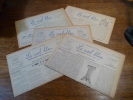









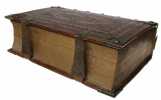



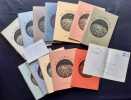
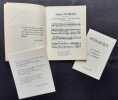
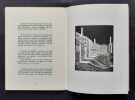
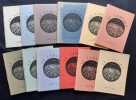
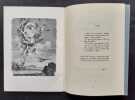
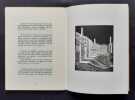

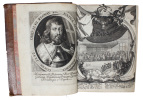




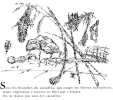
![Discours de réception du Prix Merito Editorial 2007 [ Edition originale ]. BOURGOIS, Christian](https://static.livre-rare-book.com/pictures/CDL/57923_thumb.jpg)
![Discours de réception du Prix Merito Editorial 2007 [ Edition originale ]. BOURGOIS, Christian](https://static.livre-rare-book.com/pictures/CDL/57923_2_thumb.jpg)
![Discours de réception du Prix Merito Editorial 2007 [ Edition originale ]. BOURGOIS, Christian](https://static.livre-rare-book.com/pictures/CDL/57923_3_thumb.jpg)
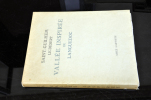




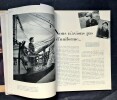
![Christian Courrèges.. COURREGES (Christian)].](https://static.livre-rare-book.com/pictures/VIG/119370_1_thumb.jpg)


